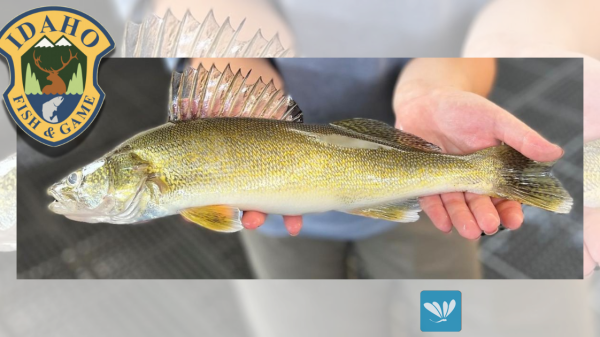LEWISTON – Public Health – Idaho North Central District (PH-INCD) in cooperation with the Nez Perce Tribe and Idaho Department of Environmental Quality (DEQ) is issuing a public health advisory today for Mann and Winchester’s lakes located in Nez Perce and Lewis counties respectively due to cyanobacteria, also known as Harmful Algal Blooms (HABs). Residents are urged to use caution when recreating in or near the water.
Recent samples taken by the Nez Perce Tribe Water Resources Division in both lakes show elevated levels of toxins, produced by cyanobacteria, which can be harmful to people, pets, and livestock. Those with existing liver or kidney damage are most at risk.
Cyanobacteria are a natural part of Idaho’s water bodies. When temperatures rise, their populations can bloom and toxic chemical compounds, or cyanotoxins, can be released into the water. HABs can vary in appearance, and may look like mats, foam, spilled paint, or surface scum, and have a foul odor. While blooms can be discovered in one area of recreational water, they can move around to different areas, and water depths and can change in severity.
PH-INCD, Nez Perce Tribe, and DEQ advise the following precautions to be taken where cyanobacteria are known to be present:
Humans, pets, and livestock should not drink the affected water.
Humans and animals should stay out of the affected water. Swimming, wading, or other activities with full body contact of water should be avoided.
Fish should be cleaned and rinsed with clean water. Only the fillet portion should be consumed. All other parts should be discarded.
Pets and livestock are vulnerable to cyanobacteria and their toxins and should stay out of water where blooms are visible. Pets and livestock can be exposed to cyanobacteria and their toxins through drinking, swimming, or self-grooming by licking their wet coat or paws. A reaction will likely require immediate veterinary attention.
Do not allow pets to eat dried algae.
If affected water contacts skin or pet fur, wash with clean potable water as soon as possible.
Areas of visible algae accumulation should be avoided. Symptoms of cyanotoxin exposure include rashes, hives, diarrhea, vomiting, coughing, and/or wheezing. More severe symptoms affecting the liver and nervous system may result from ingesting water. If symptoms persist, consult your healthcare provider.
For information on cyanobacteria blooms and a map of recreational water quality health advisories in Idaho, visit www.deq.idaho.gov/recreation-health-advisories or the Idaho Department of Health and Welfare’s website at: https://www.gethealthy.dhw.idaho.gov/recreational-water-health-advisories. Many harmful algal blooms are identified through public reporting. If you suspect a bloom on a recreational water body in Idaho, report it to DEQ at https://cyanos.org/bloomwatch/.

















